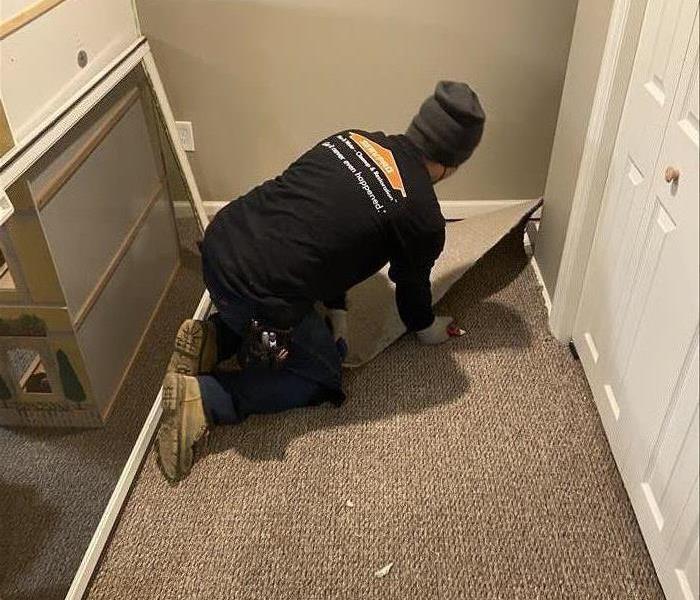Dirty Water Cleanups
1/17/2022 (Permalink)
Did You Know There Are 3 Varieties of Water Damage?
If the disaster seems manageable you may be tempted to handle it yourself, unlike a large flood or burst pipe. While this may seem like a cost saving idea in the short run, the hazards and future problems can become very costly. In reality, cleaning up and restoring a water damage isn’t always as straightforward as it seems.
Below we have highlighted three major things you need to be aware of when addressing water damage from a small to big water loss.
1) Know What You’re Dealing With
Water damage can be caused by the three types of water listed:
- Clean water (Category 1)
- Gray water (Category 2)
- Black water (Category 3)
It’s crucial to understand the differences between each of these categories, Category 2 and Category 3 water both present risks to you, your employees, customers and loved ones. And all three categories need to be handled in a different manner to be done properly.
Clean Water-
The most common sources of clean water normally come from a pipe, water heater, steam lines or even rainwater after a storm. The basic rule of thumb- it should look and smell like tap water. These types of water can be handled with normal water loss procedures, however recovering from Category 2 and Category 3 water damage involves additional considerations.
Gray Water-
A Category 2 water loss, or “grey water” refers to a source of water which contains a large degree of chemical, biological, or physical contaminants that can cause health effects.
Black Water-
Category 3 water loss involves water that is contaminated and can contain pathogenic, toxigenic, or other harmful agents. Such water contains things like silt, organic matter, pesticides, heavy metals, regulated materials, or unsafe substances.
2) Make Sure You Investigate All of the Damage
The challenging thing about recovering from water damage from something like a broken pipe or storm damage is that you can typically only see the visible surface damage. The majority of the moisture is actually hidden in walls, floors and more, making it necessary to identify and thoroughly dry all of the affected areas to prevent mold growth. If the wall has insulation, we will use flood cuts. We may even need to remove your base molding and flooring materials depending on damage, these are things that can become overlooked doing it yourself.
3) Establish Proper Airflow and Keep the Windows Closed When Drying
Once moisture becomes present, your first thought may be to open windows to assist in the drying process, in reality this may not be your best move. For example, if your building is mechanically ventilated, the systems need constant pressure levels to work correctly. You should avoid excess heat, cold, and humidity, or you may end up slowing the drying process. After we remove wet materials and create necessary cuts in the walls, we begin placing down drying equipment. This process continues until moisture meters read safe levels again.
No matter what type of water damage you’re dealing with, don’t hesitate to call us. SERVPRO of Midtown Manhattan is here to help!






 24/7 Emergency Service
24/7 Emergency Service
